Go wild
Your guide to getting closer to nature this month
EXHIBITION HIGHLIGHT
Treasure trove
Animals
The British Library, until 28 August 2023
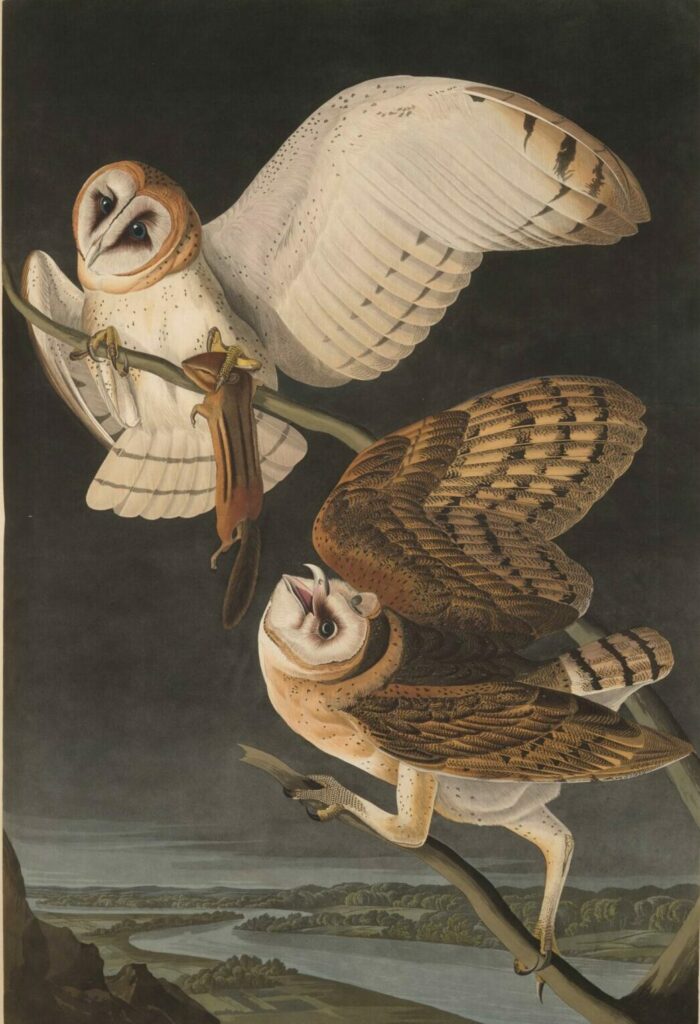
OVER THE CENTURIES, WE’VE TRAVELLED to the very corners of the globe in order to find out more about the wild world around us, from remote mountaintops to the depths of the oceans. The British Library celebrates that spirit of curiosity and adventure in a new exhibition, Animals: Art, Science & Sound, exploring the various ways in which animals have been researched and documented over the past 2,000 years. There are four zones to explore (Darkness, Water, Land and Air), each showcasing a diversity of vibrant artworks, fascinating sound recordings and evocative handwritten manuscripts. Admire a 16th century drawing of a monkfish, hear the mournful song of the last living Kaua‘i ‘ō‘ō, a honey-eating songbird declared extinct in 2000, and relish in the first scientific description of the duck-billed platypus, deemed so bizarre it was at first considered a hoax. The natural world has always captured the human imagination – and long may it continue to do so. Tickets start at £8.
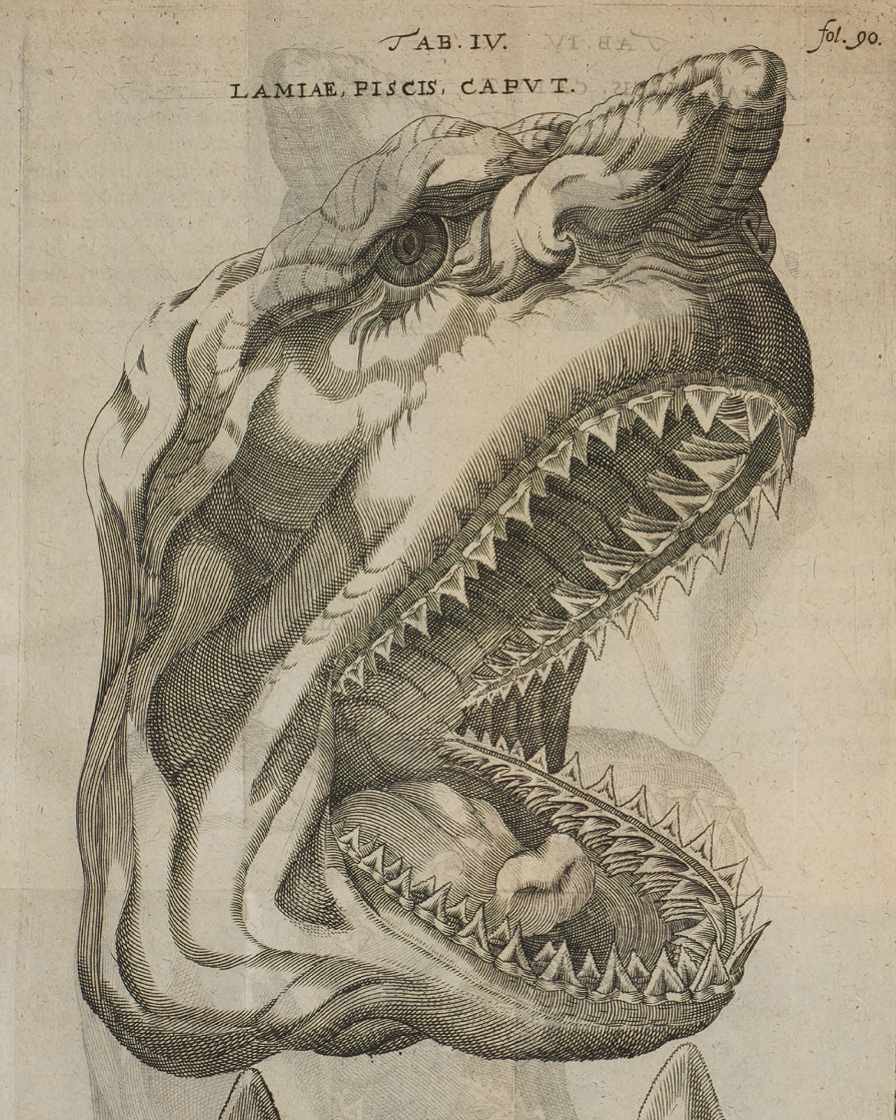
PODCAST HIGHLIGHT
Let it Grow
BBC Sounds

Inspired by the BBC’s recent Wild Isles, this upbeat new podcast, hosted by Liza Tarbuck, encourages us all to get planting and do our bit to restore nature to our neighbourhoods. Each episode, Liza chats to a wealth of guests who are passionate about gardening for wildlife, gleaning tips and ideas on everything from revitalising cracks and crevices to upcyling pots and pallets. The idea is to coexist with the wild and transform sad, grey spaces into ‘delicious living worlds’. “Don’t overthink it,” advises Liza – “the first step is often the hardest. Let go and let it grow.”
CHILDREN’S BOOK OF THE MONTH
Grandpa and the Kingfisher
By Anna Wilson and Sarah Massini, Nosy Crow, £7.99
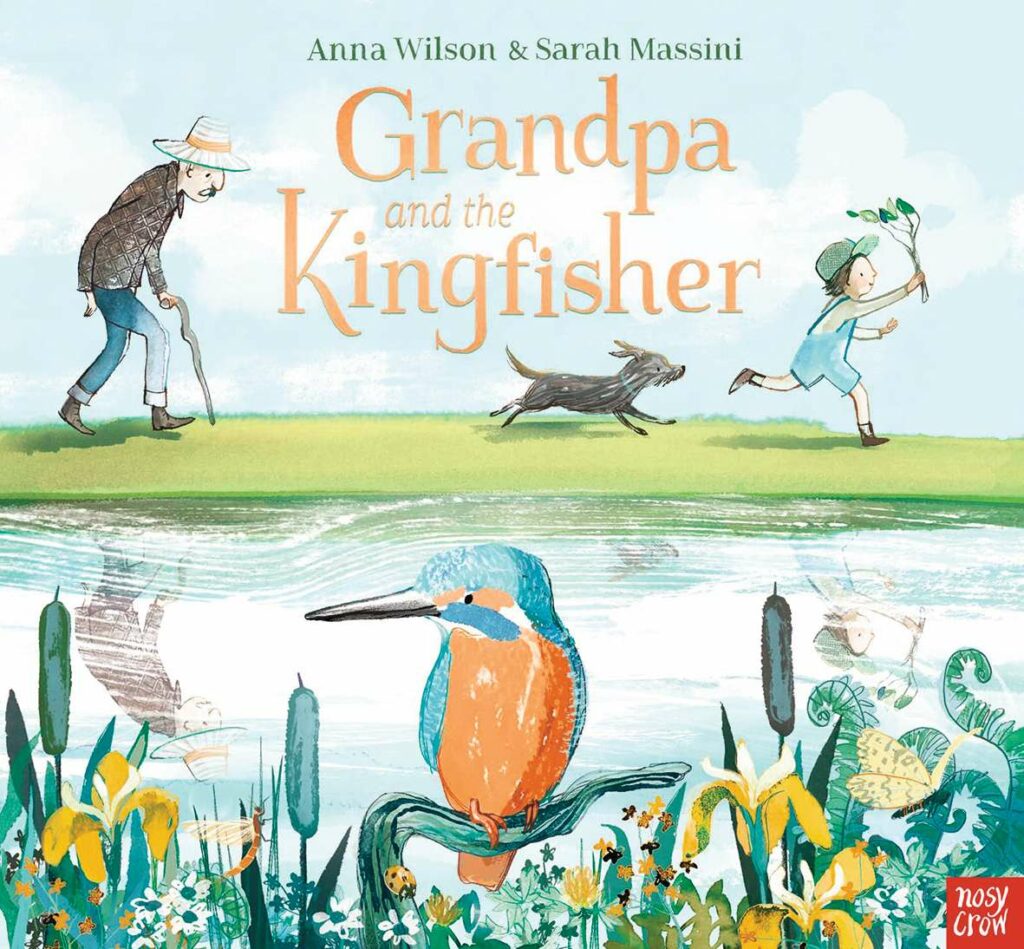
THIS IS THE TENDER STORY OF A YOUNG boy who visits his local river through the course of the year, accompanied by his grandfather and his dog, to search for kingfishers. As well as recounting the bond between grandfather and grandson, the book also recounts a year in the life of a kingfisher, with plenty of gentle natural history woven into the conversation. Grandpa explains how kingfishers excavate nests in earthy banks; how the males bring food to the brooding females; how the hungry young can put away more than 10 fish a day. The story is brought to life through Massini’s charming illustrations, which capture this striking bird in mid-hunt, mid-dive and mid-plunge, against the backdrop of the riverbank as it changes with the seasons.
This is an ode to the permanence and power of nature and the circle of life, and even though the idyllic representation of a British river is somewhat at odds with the unfortunate state of our waterways today, it is nonetheless a delightful introduction to our ‘halcyon’ bird.
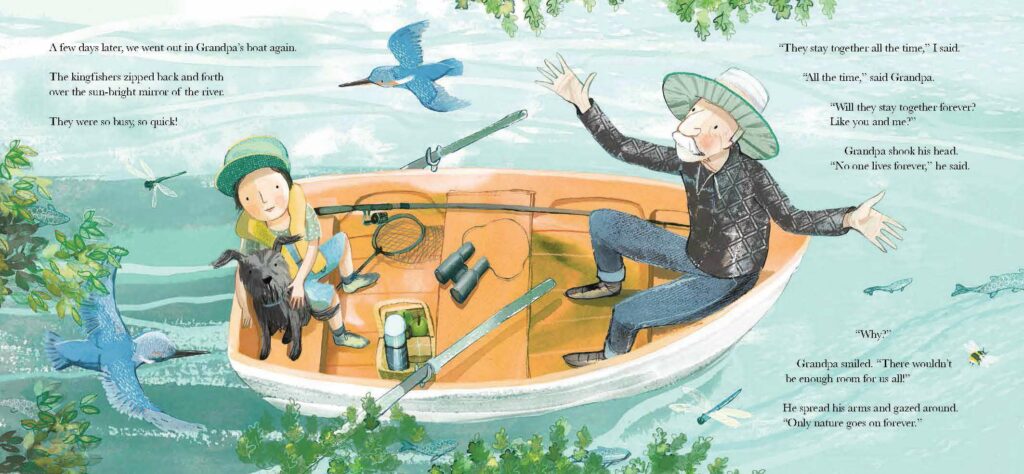
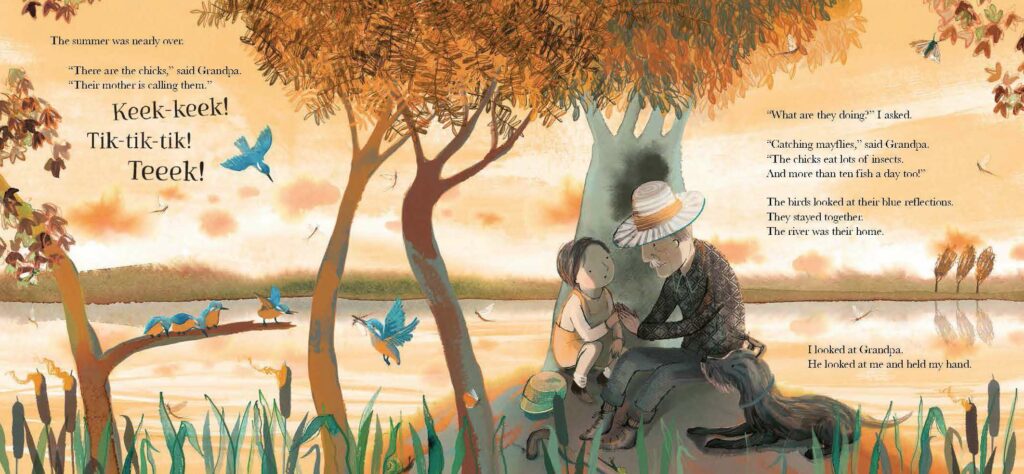
BOOKS ROUND UP
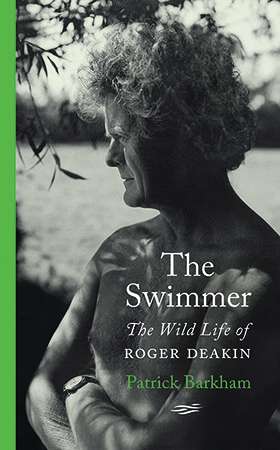
The Swimmer
By Patrick Barkham, Hamish Hamilton, £20
Adman, cidermaker, teacher, environmentalist, music promoter, filmmaker and writer, Roger Deakin is best known for Waterlog, the modern classic that kick-started the wild swimming movement. In this creative hardback, Patrick Barkham draws on his subject’s own words (as well as those of friends and family) to weave together the story of his unique life.
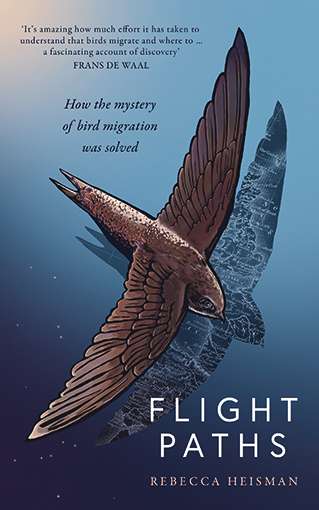
Flight Paths
By Rebecca Heisman, Swift Press, £16.99
How and why birds travel across continents and fly thousands of miles each spring and autumn, is a source of deep fascination. It’s a mystery that bird enthusiast and science writer Rebecca Heisman uncovers in this hardback, profiling the scientists, engineers and naturalists who have led groundbreaking research, explaining the technology – radar, satellites and AI – utilised along the way.
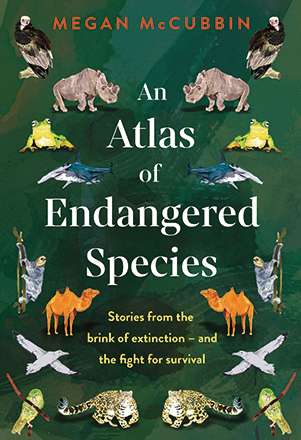
An Atlas of Endangered Species
By Megan McCubbin,
Two Roads, £20 About 55,000 animals and plants are pushed to extinction every year. Zoologist and wildlife TV presenter Megan McCubbin shares the stories of 19 endangered species, from Sumatran orangutans to lady’s slipper orchids, and the people fighting to save them, in an illustrated hardback designed with dyslexic readers in mind.
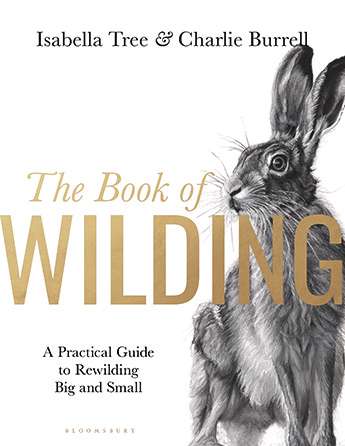
The Book of Wilding
By Isabella Tree and Charlie Burrell, Bloomsbury, £24.50
Pioneering husband and wife, Charlie and Isabella, restored their West Sussex estate to its natural, uncultivated state. In a new guide they draw on two decades of rewilding experience to show how we can all take part. Whether you own a window box or run a community garden, this illustrated hardback will leave you inspired and hopeful.
ID GUIDE
Pond predators
Voracious hunters lurk in the murky bottoms and weedy margins of our ponds, canals and lakes. Here are three little devils to dip for. For more ID guides: discoverwildlife.com/ identify-wildlife
WATER SCORPION
Leaf-shaped body, 30-35mm long. Its ‘stinger’ is a breathing siphon. Grabs prey with pincer-like front legs.
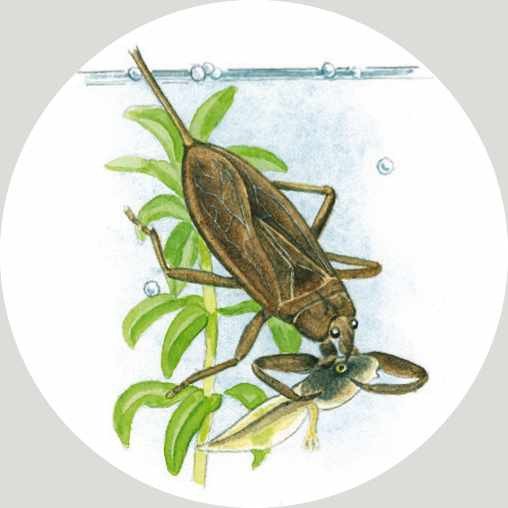
DRAGONFLY NYMPH
Thickset body, 40mm long. Uses extendable jaw tipped with sharp pincers to impale its prey.
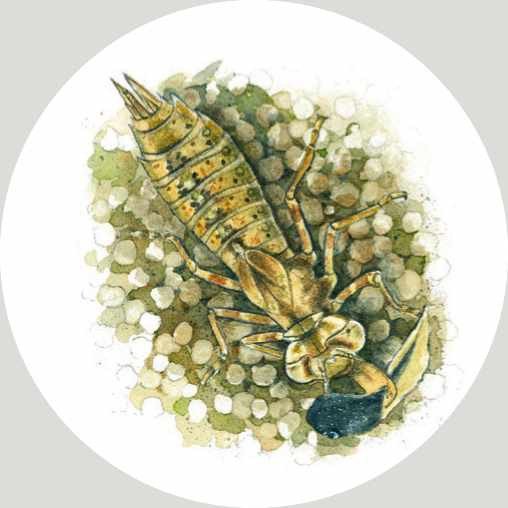
DAMSELFLY NYMPH
Slimmer than dragonfly larvae and usually shorter, approximately 20mm. Hunts like dragonfly nymph.
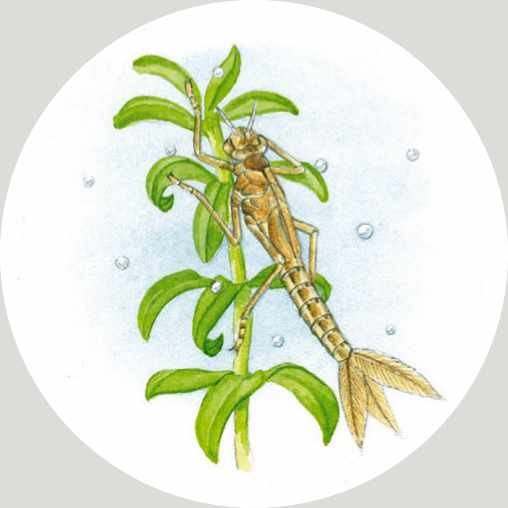
TV HIGHLIGHT
Springwatch
BBC2, Catch up on iPlayer, 29 May to 15 June 2023
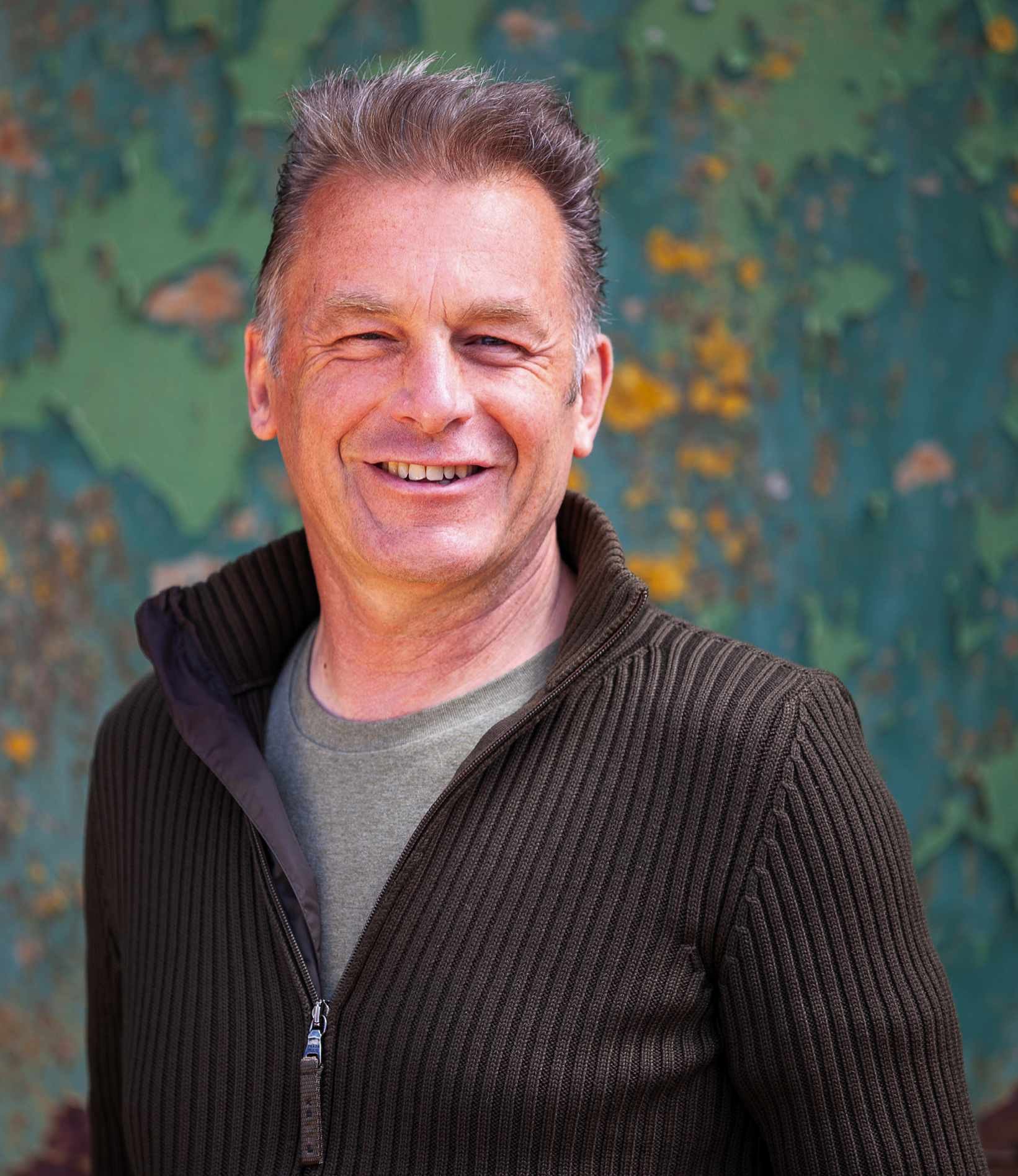
It’s all change for Springwatch 2023. After successful seasons at Wild Ken Hill in Norfolk, Chris Packham and Michaela Strachan will this year be anchoring the show from the new Springwatch hub at RSPB Arne in Dorset. Iolo Williams is on hand as a roving reporter based at nearby Purbeck Heaths, a ‘super’ nature reserve that brings together 11 priority habitats. Completing the 2023 squad is Gillian Burke, who will be based in North Wales, where she’ll visit Snowdonia, Anglesey and other great sites in the region.
BBC Wildlife asked series editor Jo Brame what to expect from this year’s Springwatch: “We’ll have loads of different species – all the reptiles and amphibians, plus different species of birds. We’re hoping to really make the most of all of that from our base at RSPB Arne. There will be heathland birds and species that we would not have seen previously while based at Wild Ken Hill in Norfolk. RSPB Arne is also near Poole Harbour, where we have the osprey project, so it’s going to be a completely different look.”
The ‘Watches’ continue to pioneer green energy, as Jo explains: “Our carbon footprint is very important. We’ve got our hydrogen generator, with solar batteries, and then we’ve got some other exciting new technologies that we’re exploring later in the year.”
As well as the live broadcasts, the three-week run will feature pre-recorded video contributions from Springwatch alumnus Megan McCubbin, veteran BBC reporter Frank Gardner, and Nadeem Perera, co-founder of the Flock Together birdwatching collective.
MEET THE VOLUNTEER
“I created a dive team to collect marine data”
Neeve O’Flynn-Mundin is surveying sharks and coastal habitats around the Isle of Wight
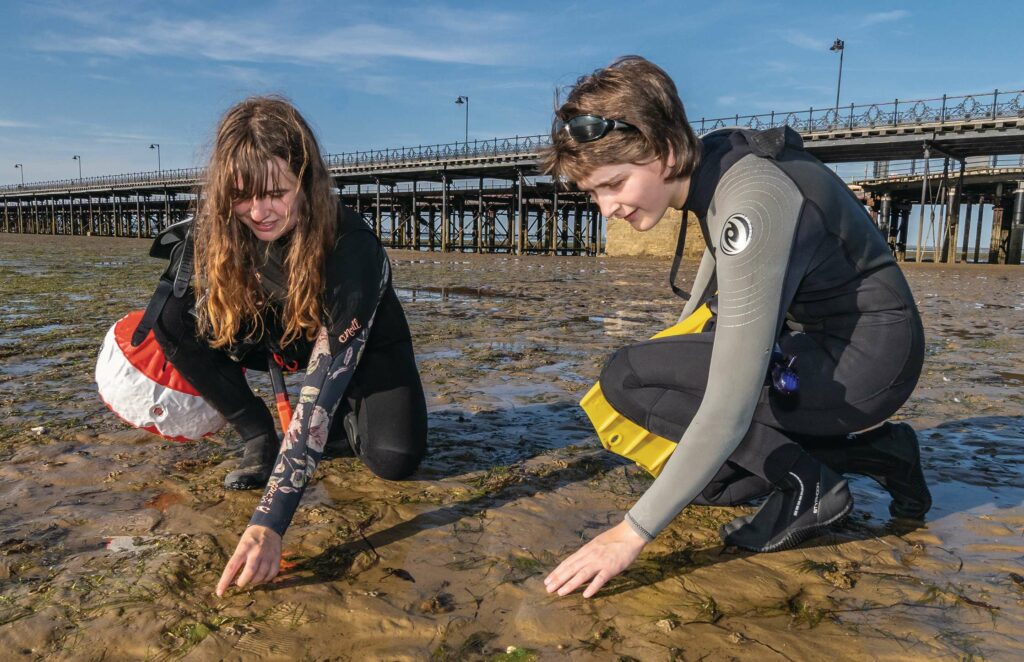
As a SharkLab technician for marine conservation charity Blue Seas Protection (BSP), Neeve O’Flynn-Mundin’s main responsibility is to monitor the populations of nine globally endangered shark species, commonly known as ‘skate’, living and breeding around the Isle of Wight (IOW) by counting and classifying shark eggcases that wash up on the beaches. Neeve also coordinates community outreach events for BSP, such as the SharkLab LiVE! roadshow, which includes workshops, beach cleans, bioblitzes and surveys.
What is SharkLab?
SharkLab is a marine citizen science project that records and collates information on rare and protected shark species in the IOW biosphere, including in its three marine conservation zones (MCZs). By surveying eggcases, the project identifies where species are breeding and tracks population trends. For example, during the pup hatching season, from October 2021 to May 2022, we collected 1,800 eggcases from nine skate and shark species found around the IOW, with 1,600 eggcases coming from Sandown Bay in the Bembridge MCZ.
Why do you harvest seagrass seeds?
BSP helps with the initiatives of many other marine charities and groups, including Project Seagrass (PS). Seagrass is an invaluable habitat for many skate and larger shark species living around the IOW, as seagrass meadows are the perfect nursery for skate and shark pups. PS is working on the IOW to understand the best methods for seagrass restoration through scientific planting trials. These trials and the seagrass seeds that are harvested by PS and volunteers from BSP will help seagrass restoration projects across the UK.
What’s your proudest moment as a volunteer?
Creating a dive team with people from around the IOW, as many of the divers had previously stopped diving due to not having access to dive boat facilities or a genuine reason to dive. Working together to become Marine Conservation Society (MCS) Seasearch observers, we put our diving skills to good use to conduct underwater surveys in MCZs – what could be better? All the information we gather contributes to databases that help conserve wildlife.
5 THINGS WE LOVE
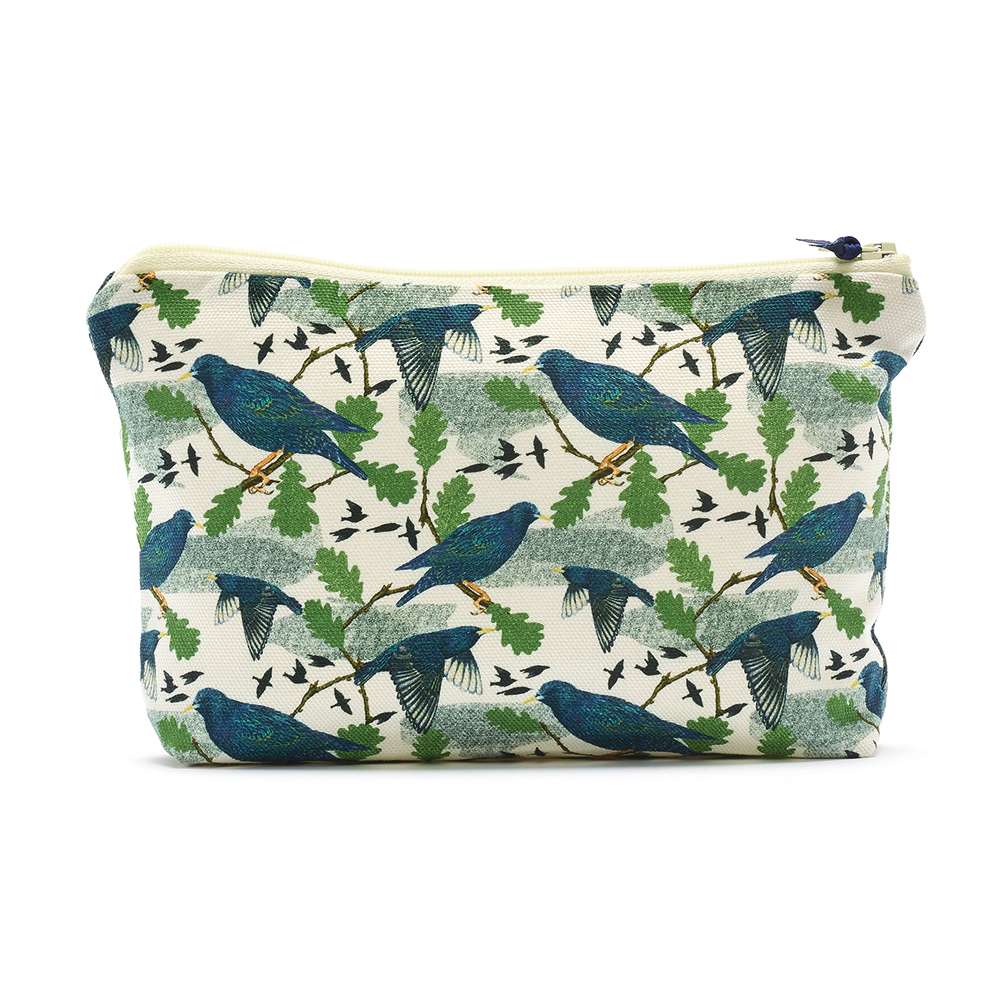
1 Starlingmurmuration pouch, £14, shopping.rspb.org.uk
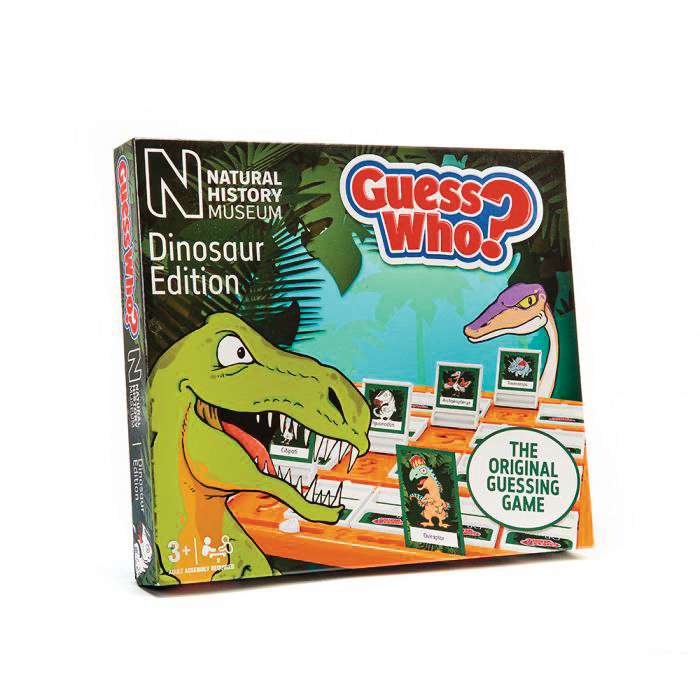
2 Guess Who? Dinosaur edition, £20, nhmshop.co.uk
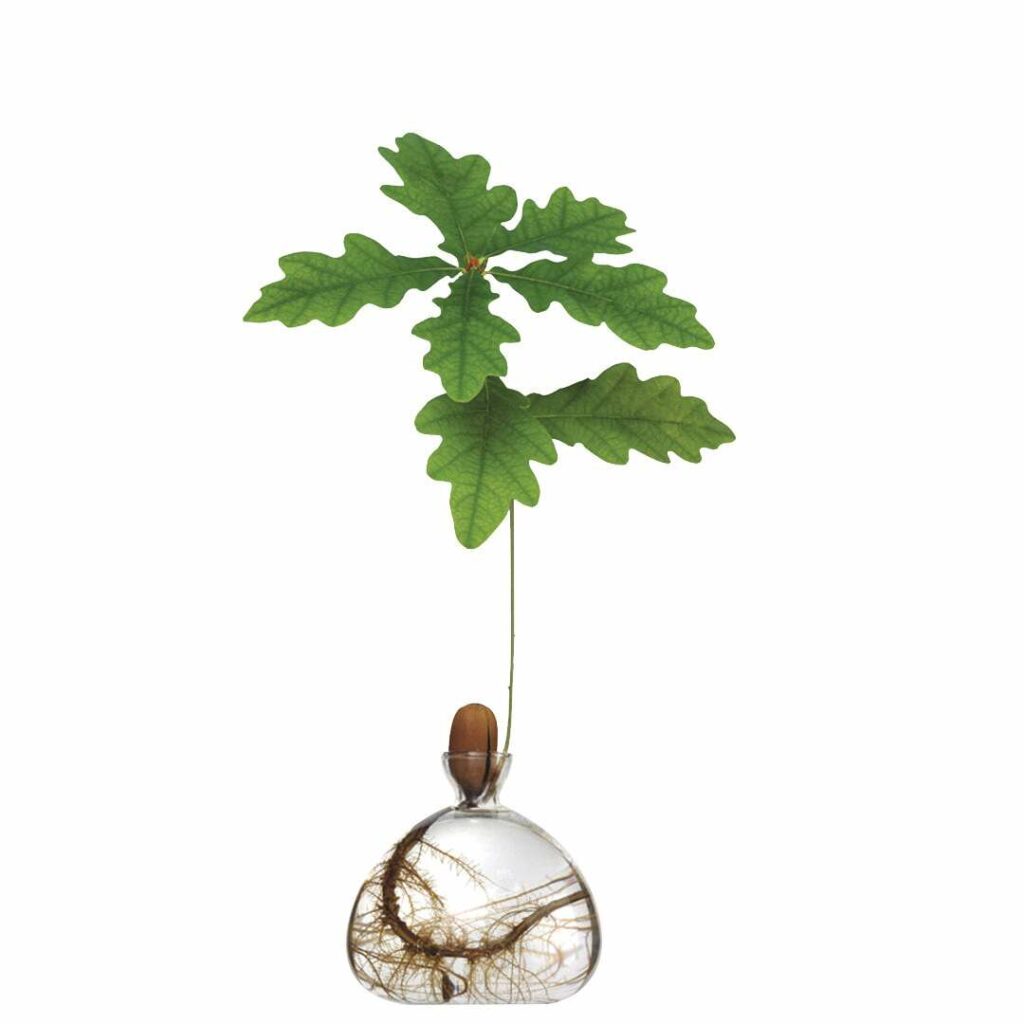
3 Acornvase, £24, ilexstudio.com
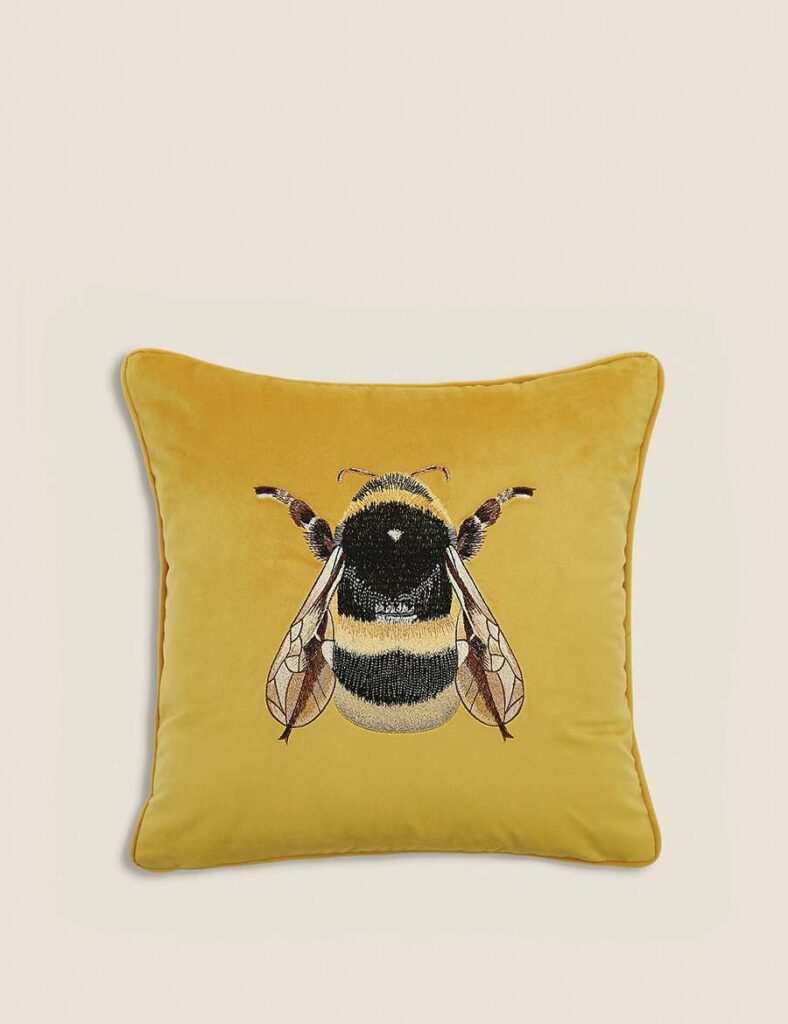
4 Velvet bee cushion, £15, marksandspencer.com
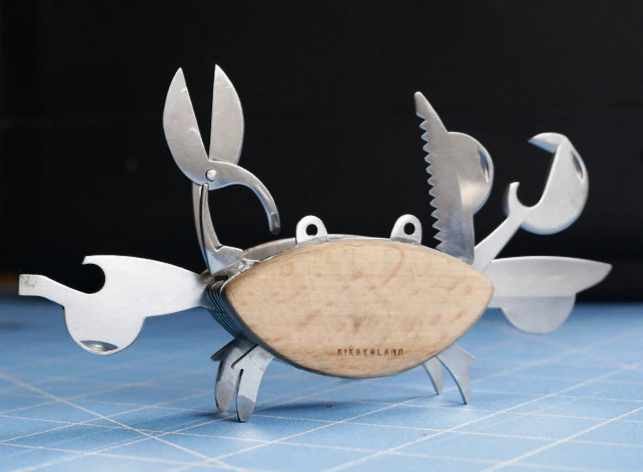
5 Kikkerlandcrab multi tool, £21, bunka.co.uk